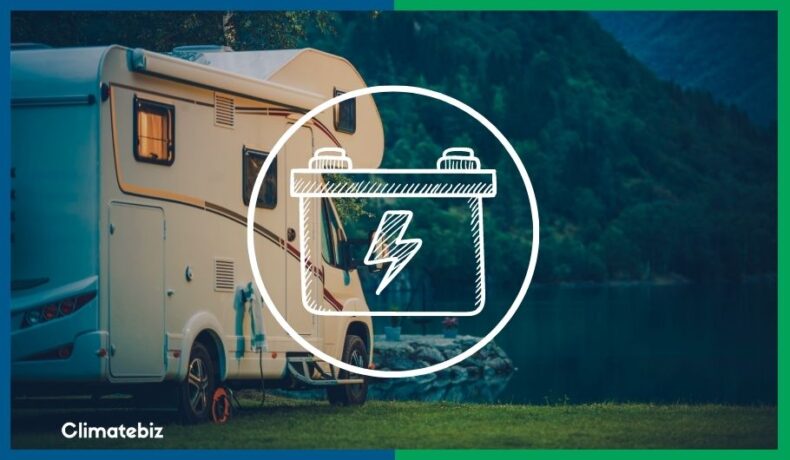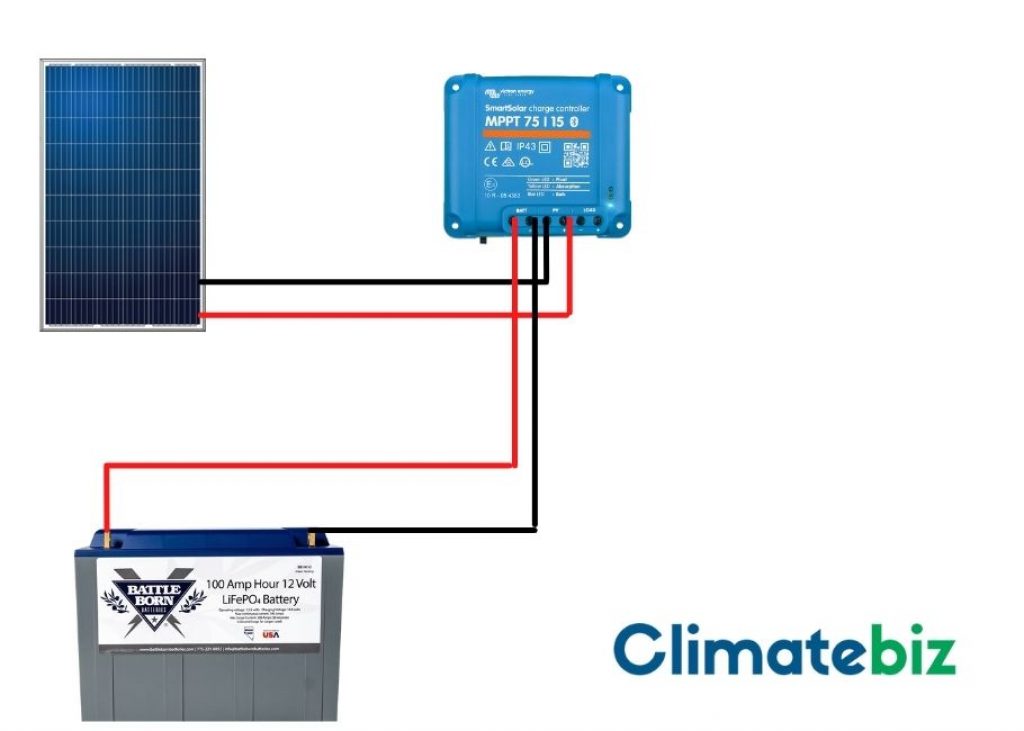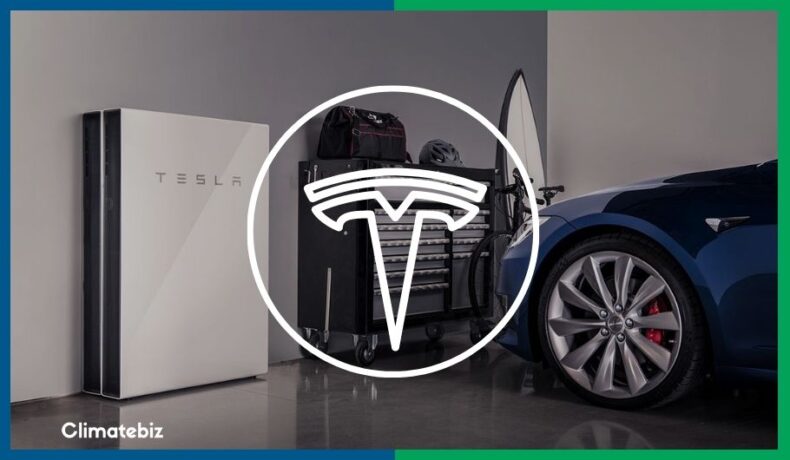
One of the most important pieces of your mobile solar setup is your RV solar battery.
This one bit of technology sees to it that everything else aboard your recreational vehicle is charged and ready to be used at all times.
There are different types of RV solar batteries on the market, each one with its own pros, cons, and variable price ranges.
In this article, we’ll answer all of the most frequently asked questions surrounding the RV solar battery.
Affiliate Disclaimer
Table of Contents
What Type of Battery Is Best For My RV?
There are currently 4 different types of solar batteries on the market:
- Lead-acid
- Lithium
- Red-ox flow
- Hydrogen technologies
However, lead-acid and lithium batteries. are suited best to powering RVs.
Red-ox flow and hydrogen technology are not feasible for RV applications.
Red-ox flow is for industrial use only. While the same can be said for hydrogen technology, we may very well see it get its fair share of the domestic energy storage market in the near future – although it’s unlikely to enter the recreational vehicle industry.
The One Factor That Determines Which Solar Battery Is Best For Your RV
Budget.
What sort of budget are you working with? There are both affordable lower quality options, and more expensive higher quality RV solar batteries available on the market.
Our recommendation on the best type of RV solar battery?
- Lithium batteries.
However, that’s just our recommendation. The question is, why is that our recommendation?
Well to understand that let’s look at both battery technologies.
Lead acid batteries

When it comes to rechargeable batteries, lead-acid is some of the oldest technology out there. It dates back all the way to 1857 when it was created by Gaston Plante.
It may already be obvious, but a lead-acid battery’s main component is – you guessed it – lead.
Lead-acid batteries are often compared to lithium batteries (and sometimes confused with them too).
Lead-acid technology has released 2 types of batteries that are ideal for RV applications:
1. GEL RV Solar Battery
A lead-acid GEL battery is sealed and completely maintenance-free. The technology was developed 70 years ago by a German company. The main feature found in a GEL solar battery is the gel electrolyte.
GEL solar batteries are generally very safe – no risk of gas leakage makes them ideal for your RV.
A gel battery contains:
- Positive electrode: PbO2 (lead oxide)
- Negative electrode: Pb (pure lead)
- Electrolyte: H2SO4 (sulfuric acid as a gel)
- Membrane separator
For those of you who are interested, the working principle behind this battery is the exchange of H+ ions between the positive and negative electrodes through the electrolyte.
2. AGM RV Solar Battery
Another type of lead-acid battery common in RV installations is the AGM, invented in the 80’s AGM stands for absorbed glass mat.
Once again, AGM batteries are safe and ideal for RV installations as they are leakproof (because the acid electrolyte is absorbed on a glass matt).
The AGM and the GEL RV solar battery are similar in terms of components, except in the AGM, the electrolyte is absorbed on a fiberglass mat.
Lithium Batteries

The first commercial lithium batteries were released in 1991 by a team led by John Goodenough.
Lithium batteries are lightweight. In fact, they have around 50-60% less weight than conventional lead-acid batteries. This difference in weight makes a major positive difference, especially when you begin to build a large off-grid solar system in your RV.
They are also able to be discharged between 80% – 90%, meaning you require less space for more power.
Let’s take a look at the two main lithium-ion technologies for RV solar batteries:
LiFePo4 RV Solar Battery
LifePo4 batteries are some of the most common lithium-ion batteries on the market. They are wildly used in many solar system applications alongside solar generators.
They are made of the following parts:
- Positive electrode: Lithium oxide LiFePo4 (Lithium Iron Phosphate)
- Negative electrode: Carbon
- Electrolyte: lithium salt (Li+, gel type)
- Membrane separator
Their working principle is based on the exchange of lithium ions (Li+) from one electrode to another, due to the electrolyte. This flow of ions generates a current outside the battery cell.
LTO solar battery
LTO is the second type of lithium-ion solar battery. They work similarly to LiFePo4 batteries. However, they feature different electrode materials:
- Negative electrode (anode): Li2TiO3 (LTO): Lithium Titanate Oxide
- Positive electrode (cathode): lithium manganese oxide
LTO solar batteries are extremely robust (up to 30’000 cycles, 10 years) and powerful.
Can a Solar Panel Charge an RV Battery?
Yes, a solar panel can charge an RV battery. Generally, a 400-watt solar panel will take on average a few hours to completely charge an RV battery. However, a lead-acid battery might require 12 hours or more to reach full charge due to technological limitations.

Please note, the above diagram is extremely simplistic and we do not recommend setting up your system like this.
If you’re interested in how an RV solar system is set up we had our senior in-house electrical engineer design highly accurate blueprints for your perusal.
How Many Solar Batteries Do I Need For My RV?
As a general rule of thumb, it is recommended to have 300Ah (2,560Wh) worth of solar batteries onboard your RV. This translates to three lithium batteries rated at 100Ah each or six lead-acid batteries rated at 100Ah each.
The amount of batteries you need all comes down to the number of appliances you run in your RV.
The more electrical demand there is, the more RV solar batteries you will need.
Unlike homes with grid-tied solar systems, RVs generally rely on battery power as opposed to solar energy to run their vehicles appliances.
There is an easy formula you can use to figure out the exact number of solar batteries your RV will need.
First, you need to figure out what your RVs daily energy usage is.
See our table below and create your own one.
- Check the back of each appliance you use in the RV – they’ll usually have a label on them that indicates the total amount of power (watts) they use.
- Note down for how many hours you will use each appliance every day.
- Multiply each appliance wattage rating by the number of hours you will use it in order to establish the total amount of energy (watt-hours) used each day.
| Loads | Power (Watts) | Duration (Hours Used) | Daily energy usage (Watt-hours) |
|---|---|---|---|
| (x7) 10 Watt LED Lights | 70 | 5 | 350 |
| (x2) 110 Watt laptops | 220 | 2 | 440 |
| (x1) 90 Watt TV | 90 | 3 | 270 |
| (x1) 60 Watt Fridge | 60 | 24 | 1440 |
| (x1) 600 Watt MicroW | 600 | 0.5 | 300 |
| (x1) Gas Cook Top | 0 | 1.5 | 0 |
| (x1) 900 Watt RV AC | 900 | 3 | 2700 |
5,500Wh |
Now, when establishing how many solar batteries your RV needs, you’ll have to take into account a few efficiency losses, such as those caused by your onboard solar inverter.
For this reason, you need to add the consumption rate of the inverter to your daily total.
Different types of inverters have different consumption rates, make sure to look at the spec sheet of your inverter to determine its consumption.
- Inverter load = 40 watts
- Watts * 8 hours = 320Wh
- Total household load = 5,500Wh + 320Wh = 5,820Wh.
Note
We always recommend using a high-quality pure sine wave inverter to minimize the total amount of efficiency loss your solar system experiences. But generally, you can expect a 10% efficiency loss.
Remember, we need to consider system efficiencies and temperature coefficients when sizing RV solar batteries.
How Do You Make Up For These Inefficiencies?
To make up for these inefficiencies you have to oversize the system.
First, select your RV battery voltage.
- 12V – Best for smaller systems
- 24V – 48V – Best for medium to large systems
Generally, all RV systems are regarded as smaller systems, therefore we’ll use 12V in our example.
Based on the above table, your energy consumption is 5,820Wh (including inverter consumption).
Considering your inverter efficiency rate is 90%, you need to add 10% to your daily power consumption:
- 5,820Wh * 1.1 inefficiency = 6,402Wh
Temperature changes
Next, you need to account for temperature changes in your battery’s capacity to deliver power.
Assuming you are using lead-acid batteries in your RV, you’ll need to multiply your battery capacity by 1.59%. If you use lithium-ion batteries in your RV (recommended), multiply your required capacity by 1.2.
- Lead-Acid: 6,402* 1.59 = 10,179Wh
- Lithium-ion: 6,402 * 1.2 = 7,682Wh
Efficiency losses
Next, you need to account for the efficiency loss that happens during charging and discharging.
- Efficiency loss for lead-acid = 20%.
- And for lithium-ion = 5%.
Therefore, the minimum energy storage capacity of your battery bank:
- Lead-Acid: 10,179Wh * 1.20 = 12,214Wh
- Lithium-ion: 7,682Wh * 1.05 = 8,066Wh
Days of autonomy
Lastly, you need to take into consideration how many days of autonomy you want your RV solar battery to have.
Essentially, this means figuring out how many consecutive days you need your RV solar battery to supply you with energy (in the event your solar panels are not able to recharge the battery bank due to bad weather).
Usually, this number sits around 2 to 5 days.
For our example, we’ll use 2 days.
- Lead-Acid: 12,214Wh x 2 days = 24,428Wh
- Lithium-ion: 8,066Wh x 2 days =16,132Wh
Convert Watt-Hours into Amp Hours
Finally, you need to convert watt-hours into amp hours. To do this divide your RV battery capacity by the voltage.
- Lead-Acid: 24,428Wh / 12V = 2,035Ah
- Lithium-ion: 16,132Wh / 12V = 1,344Ah
If you were to use 200Ah batteries in your RV it would come down to the following:
- Lead-acid = 11 RV batteries required (You will need to double the amount of batteries used with lead-aciddue to 50% discharge rate)
- Lithium-ion = 7 RV batteries required. (This is if you need autonomy, if you only need power for each day, 3 lithium-ion batteries rated at 100Ah each will suffice.)
How Do You Keep RV Batteries Charged in Storage?

Lead-acid
It’s important that you always charge your lead-acid batteries before you store them. Make sure that you apply a topping charge every 6 months to prevent the voltage from dropping below 2.05V/cell. Allowing the voltage to drop below this point will cause it to sulfate.
AGM
Lead-acid and AGM batteries are more or less the same when it comes to their chemical makeup. However, with AGM RV batteries you won’t need to worry so much about charging them every 6 months.
Lithium-ion
Lithium-ion RV batteries have a very low self-discharge rate and could keep a partial charge for many years without usage.
In general, we recommend removing solar batteries from your RV if you don’t plan on using them for extended periods of time.
How Long Will My RV Battery Last While Boondocking?
Most RV batteries will last 1 – 2 days while boondocking. This period of time is influenced by the total onboard battery capacity VS the total daily RV energy consumption. Typically lithium-ion batteries tend to last longer than lead-acid batteries.
The trick to allowing your RV solar battery to last longer is to use appliances that draw lower wattages.
For example, use a gas-powered oven as opposed to an electric one. This will save you tons of energy each day.
Also, make sure to invest in appliances that are more energy-efficient, such as those with good Energy Star ratings.
Why Do My RV Batteries Keep Dying?
There are multiple reasons why your RV solar battery keeps dying. They are:
- Old age
- Overcharging
- Undercharging
- Parasitic loads
- Too much load draw
Old age
Every battery has a limited amount of life cycles. Once a battery cycles through all its rated life cycles it begins to deteriorate pretty quickly. Generally, you’re going to get the most life cycles from a lithium-ion battery.
Overcharging
Overcharging a battery (especially a lead-acid battery) causes excessive gassing, meaning the electrolyte gets hot and both hydrogen and oxygen gas is created. This greatly reduces the lifecycle of your solar RV battery.
This is why using a quality charge controller, like the one from Victron Energy is recommended in an RV solar setup.
Undercharging
This one is self-explanatory, if you don’t charge your battery enough, it may keep dying prematurely when you need it the most.
Parasitic laods
Typical parasitic loads can be around 30 milliamps (0.030 amps), and go unnoticed while draining your RV battery. To find the culprit you’ll need to remove the negative wire from the battery.
Then put a test light between the post and the ground wire. If the light shines it means you have a parasitic load draining your RV battery. You’ll then need to use the fuse pull method to find the culprit.
How Do You Charge a Dead RV Battery?
Ultimately, this depends on the type of RV battery you are using. Let’s speak about both a lead-acid and lithium-ion battery.
Lead-Acid RV Battery
Sulfate buildup is bound to happen and is a natural process that occurs when a lead-acid battery is discharged. Essentially what happens is the sulfates in the electrolyte attach themselves to the plates in the battery each time it’s discharged.
When the lead-acid battery is once again recharged, the sulfates move back into the acid, but not entirely. Some of the remaining sulfates actually crystalize and attach themselves to the internal plates.
After a long period of time, this crystalized buildup means there isn’t enough sulfate remaining to establish a meaningful chemical reaction required for the battery to produce enough voltage.
One way to charge a dead lead-acid battery would be bypassing high-frequency electronic pulses through the battery, this will help break up the crystals and allow them to move back into the electrolyte.
Lithium-ion RV Battery
You may have heard the phrase before, “my lithium battery is asleep”? How this happens largely comes down to how you store your battery for extended periods of time.
If you store and don’t use your discharged lithium RV battery for a long time it can fall into sleep mode. Remember, all batteries discharge (although at a much slower rate for lithium batteries) so you may need to give your sleeping battery a boost charge to wake it up from its slumber.
Most modern lithium batteries have a protection circuit fitted, essentially shutting down the battery once it drops below a certain state of charge.
By applying a boost charge, a small amount of current is used to jumpstart the protection circuit. Once the right cell voltage is reached again, it’ll be capable of taking on a normal charge.
Warning!
Avoid boosting lithium-ion RV batteries that have been discharged below their optimal voltage point for a very long period. Cells in this battery are extremely unstable and may begin to overheat should you boost them.
Give this article a read if you’d like to learn how to boost a lithium-ion battery safely.
Final Thoughts
An RV solar battery is an essential part of any mobile solar setup. They’ll allow you to travel to places without any electrical power points (and these are oftentimes the best places).
We highly recommend that you correctly size your RV battery before going on any extended road trips.
If you don’t feel comfortable doing this yourself, please feel free to reach out to us. We’ll assist you wherever possible.








